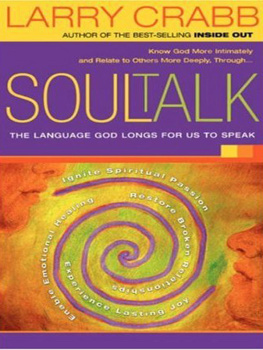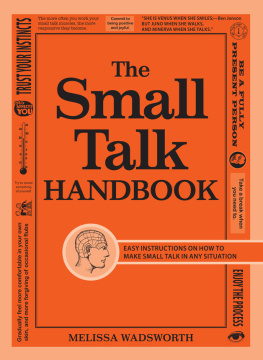Linguistic Epidemiology: Semantics and Grammar of Language Contact in Mainland Southeast Asia
Person Reference in Interaction: Linguistic, Cultural and Social Perspectives (coeditor)
Copyright 2017 by N. J. Enfield
Hachette Book Group supports the right to free expression and the value of copyright. The purpose of copyright is to encourage writers and artists to produce the creative works that enrich our culture.
The scanning, uploading, and distribution of this book without permission is a theft of the authors intellectual property. If you would like permission to use material from the book (other than for review purposes), please contact permissions@hbgusa.com. Thank you for your support of the authors rights.
Basic Books
Hachette Book Group
1290 Avenue of the Americas, New York, NY 10104
www.basicbooks.com
First Edition: November 2017
Published by Basic Books, an imprint of Perseus Books, LLC, a subsidiary of Hachette Book Group, Inc.
The Hachette Speakers Bureau provides a wide range of authors for speaking events. To find out more, go to www.hachettespeakersbureau.com or call (866) 376-6591.
The publisher is not responsible for websites (or their content) that are not owned by the publisher.
The Library of Congress has cataloged the hardcover edition as follows:
Names: Enfield, N. J., 1966 author.
Title: How we talk : the inner workings of conversation / N. J. Enfield.
Description: First edition. | New York : Basic Books, 2017. | Includes bibliographical references and index.
Identifiers: LCCN 2017022136 (print) | LCCN 2017040541 (ebook) | ISBN 9780465093762 (ebook) | ISBN 9780465059942 (hardcover)
Subjects: LCSH: Discourse analysisPsychological aspects. | Conversation. |
BISAC: SCIENCE / Life Sciences / Evolution. | LANGUAGE ARTS & DISCIPLINES / Linguistics / General. | LANGUAGE ARTS & DISCIPLINES / Linguistics / Pragmatics.
Classification: LCC P302.8 (ebook) | LCC P302.8 .E54 2017 (print) | DDC 401/.41dc23
LC record available at https://lccn.loc.gov/2017022136
ISBNs: 978-0-465-05994-2 (hardcover); 978-0-465-09376-2 (e-book)
E3-20171013-JV-PC
For SCL, with enormous appreciation
Here are some facts about how we talk:
The average time that people take to respond to a question is about the same time that it takes to blink the eye: 200 milliseconds.
A no answer to a question will come slower than a yes answer, no matter which language is spoken.
There is a standard one-second time window for responding in conversation: It helps us gauge whether a response is fast, on time, late, or unlikely to arrive at all.
Every 84 seconds in conversation, someone will say Huh?, Who?, or something similar to check on what someone just said.
One out of every 60 words we say is um or uh.
I want to argue that these facts, and others like them, take us to the core of what defines our species unique capacity for language. This claim may seem surprising, given the more bookish concerns of mainstream research on language, such as the meanings of words and the rules of grammar. But if the fine timing of answering questions or the functions of mm-hmm and Huh? seem trivial, let me borrow from Charles Darwins remarks on the habits of earthworms: The subject may appear an insignificant one, but we shall see that it possesses some interest. I feel this way about the lowly organized elements of language that are the topic of this book: the rules we follow when taking turns in conversation, the on-the-fly ways we deal with errors and misunderstandings, and the functions of little utterances such as uh, mm-hmm, and Huh?
Researchers in disciplines from philosophy to psychology to anthropology to linguistics have long aimed to uncover the properties of the human mind that make language possible. They have focused on trying to understand how language works: what its like, how children learn it, how it is processed in the mind. But they have had surprisingly little to say about what language is like in the back-and-forth of everyday conversation. This makes little sense, given that conversation is where language lives and breathes. Conversation is the medium in which language is most often used. When children learn their native language, they learn it in conversation. When a language is passed down through generations, it is passed down by means of conversation. Written language is many a researchers first point of reference, but it should not be: Most languages do not have a written form at all, and in any case, written formsfrom blogs to street signs to instruction manualsare ultimately derived from the spontaneous, self-organizing system of dialogue that we call conversation.
This means that our current scientific knowledge of language, with its emphasis on decontextualized words, phrases, and sentences, is badly out of kilter. I want to show you some of what has been overlooked or set aside in the mainstream science of language. I will argue that the inner workings of conversation have their rightful place at the center of the language sciences.







